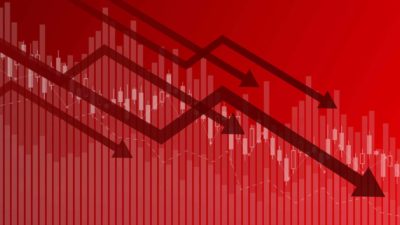The S&P/ASX 200 Index (ASX: XJO) closed up a stellar 1.4% on Tuesday 7 May.
This great run was fuelled by the Reserve Bank of Australia's meeting on the day, which saw the central bank leave Australia's official interest rate steady at 4.35%.
However, the minutes of the RBA's meeting, released today, reveal that ASX 200 investors came closer than many expected to witnessing another rate hike as the inflation outlook remains highly uncertain.
The ASX 200 is down 0.2% in early afternoon trade today.
Here's what we learned from the RBA's inflation outlook and interest rate expectations.
ASX 200 investors dodged a rate rise bullet
It turns out the speculations of another potential 2024 interest rate increase from the RBA weren't so far out of the ballpark after all.
And judging by the tone of the RBA board's minutes, ASX 200 investors shouldn't write off this possibility just yet.
In the meeting, chaired by Governor Michele Bullock, the RBA noted:
Raising the cash rate at this meeting could be appropriate if the board formed a view that the judgements underpinning the staff forecasts risked being overly optimistic about the forces that would drive down inflation, leaving the balance of risks tilted to the upside.
Among the bigger inflationary concerns that could lead to ASX 200 investors having to bear another rate hike is Australia's tight labour market.
"Labour market conditions had eased by less than had been anticipated three months earlier," the RBA said. "Conditions in the labour market appeared to be tighter than those consistent with full employment."
The board also noted that while inflation had eased further in the March quarter "the pace of disinflation had slowed and the recent inflation data were stronger than had been expected in February".
Indicating how close Australia was to another interest rate hike, the RBA said "Most of the data received since the previous meeting had been stronger than expected."
According to the minutes:
Taken together, these data suggested that there may be somewhat less slack in the economy than previously assessed. Inflation in Australia had declined more slowly than anticipated. Conditions in the labour market had eased by less than expected over prior months and were tighter than those consistent with full employment.
In what was good news for the ASX 200 on the day, the final decision was to leave the cash rate unchanged.
At least, for now.
"Members agreed that it was important to convey that recent data and other information had signalled that the risks around inflation had risen somewhat," the board highlighted.
Noting "the considerable uncertainty about the outlook for both inflation and the labour market", the RBA's board members "agreed that it was difficult either to rule in or rule out future changes in the cash rate target".









